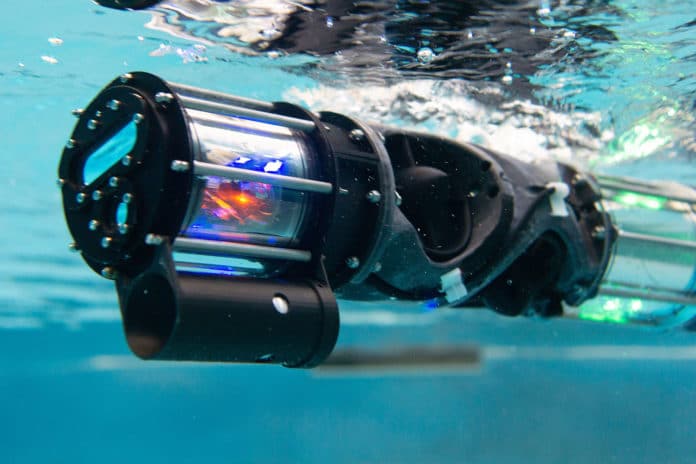The robotics department at Carnegie Mellon University has been working for years on highly acclaimed modular snake-like robots for all kinds of purposes. The robot is already capable of climbing sand dunes or grasping objects. But its experts have outdone themselves with the next logical step for the SnakeBot. It can now slither its way underwater to inspect ships, submarines, and infrastructure for damage.
Versions of the robot snakes have already proven their usefulness in difficult situations, such as search and rescue missions after an earthquake in Mexico City in 2017. The robot’s modular design allows it to adapt to different tasks, whether squeezing through tight spaces under rubble, climbing up a tree, or slithering around a corner underwater. But the project, led by Biorobotics Lab co-directors Howie Choset and Matt Travers, has risen to the next level.
The latest version of CMU’s SnakeBot is named Hardened Underwater Modular Robot Snake (HUMRS) and features a modular, reconfigurable design – just like its predecessors. For the underwater robot snake, the team used existing watertight modules that allow the robot to operate in bad conditions. They then added new modules containing the thrusters, buoyancy control systems, rotary articulation devices, inspection sensors, and manipulation grippers needed to maneuver the robot underwater.

The team started working on the underwater robot snake in July 2020, and by March 2021, it was already swimming in the university’s pool, diving the robot through underwater hoops, showing off its precise and smooth swimming, and demonstrating its ease of control.
The Advanced Robotics for Manufacturing (ARM) Institute helped fund this latest version of the snake-like robot. The project is intended to assist the Department of Defense with inspecting ships, submarines, and other underwater infrastructure for damage or as part of routine maintenance while they’re away from a port.
Typically, when their craft is damaged, the Navy must either send a team of divers to the ship’s location, wait until it returns to port to deploy the divers, or pull it into a dry dock – all options that take time and money. “If they can get that information before the ship comes into a home port or a dry dock, that saves weeks or months of time in a maintenance schedule,” said Fischer, who served in the Navy for three years. “And in turn, that saves money.”
A submersible robot snake could allow the Navy to inspect the ship at sea, immediately alerting the crew of critical damage or sending information about problems that need attention back to port for use when the ship docks.
The small size and flexibility of HUMRS also mean that it can navigate in areas such as pipes, where a more traditional remote submersible would have trouble doing so. Outside of military use, robots could inspect underwater pipelines for damage or blockages, assess offshore oil rigs, or check the integrity of a tank while it is filled with liquid.
